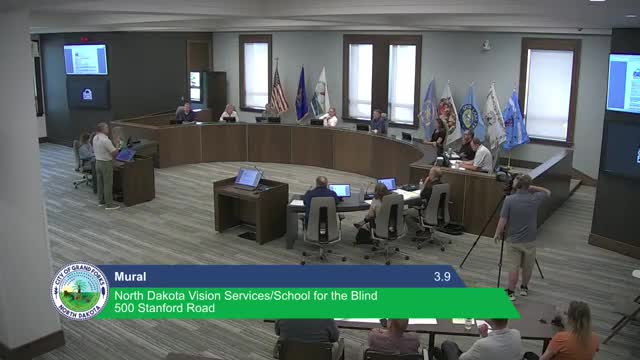Grand Forks Council Considers Approval of Mural at North Dakota Vision Services School
July 09, 2025 | Grand Forks, Grand Forks County, North Dakota
Thanks to Scribe from Workplace AI , all articles about North Dakota are free for you to enjoy throughout 2025!

This article was created by AI using a video recording of the meeting. It summarizes the key points discussed, but for full details and context, please refer to the video of the full meeting. Link to Full Meeting
The discussion began with Superintendent Olsen expressing a willingness to modify the mural to align with city ordinances, suggesting that the name of the school could be painted over to maintain the mural's aesthetic while adhering to regulations. This proposal sparked a broader conversation about the significance of public art in enhancing community identity and cohesion.
Everett shared his journey in creating the mural, detailing his initial meetings with school staff and the inspiration drawn from the unique needs of visually impaired students. He emphasized the mural's design, which is intended to be visually striking from a distance while inviting closer inspection of its intricate details. The artist's commitment to creating a positive and uplifting representation resonated with many attendees.
Support for the mural was bolstered by Liz Legurski, a sociologist who highlighted research demonstrating the positive impact of murals on neighborhood dynamics. She cited studies showing that community art can foster social cohesion, improve perceptions of safety, and reduce stigma associated with marginalized groups. Legurski urged the commission to consider the mural's potential to enhance community pride and connectedness.
However, the meeting was not without contention. Some commission members expressed concerns about setting precedents for future murals, referencing past discussions regarding temporary murals at local schools. They noted that while public sentiment appeared supportive, there were also voices of opposition, reflecting a divided community perspective.
As the meeting progressed, residents like Laura Sawthog Holly called for a reevaluation of existing ordinances governing public art, arguing that flexibility could lead to greater community engagement and enrichment. She pointed out that many residents were unaware of the complexities surrounding mural approvals and encouraged the commission to consider the broader implications of their decisions.
The meeting concluded with a sense of urgency as the commission weighed the mural's artistic value against regulatory frameworks. The outcome remains uncertain, but the discussions highlighted a community eager to embrace art as a means of fostering connection and understanding. As Grand Forks navigates the intersection of creativity and policy, the future of the mural—and the conversations it inspires—will undoubtedly shape the city's cultural landscape.
Converted from Grand Forks City Planning and Zoning Commission Meeting July 9, 2025 meeting on July 09, 2025
Link to Full Meeting
Comments
View full meeting
This article is based on a recent meeting—watch the full video and explore the complete transcript for deeper insights into the discussion.
View full meeting